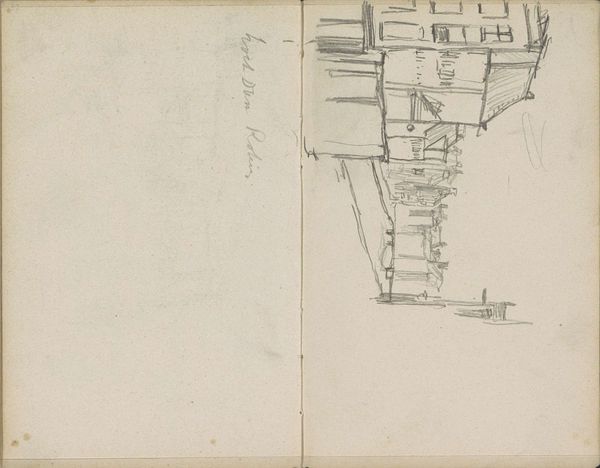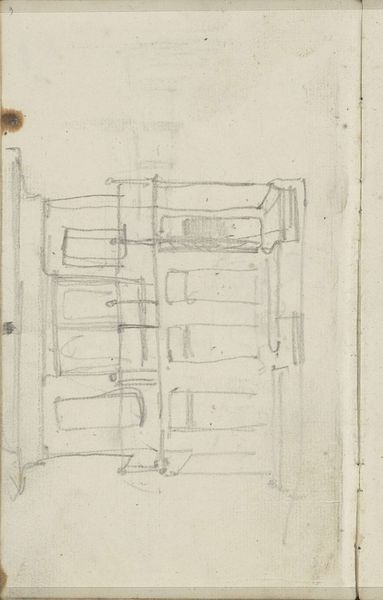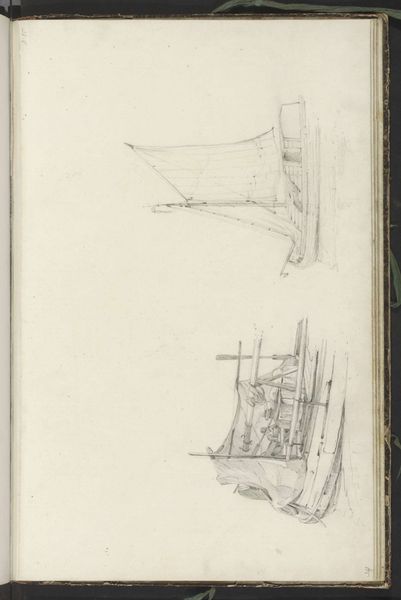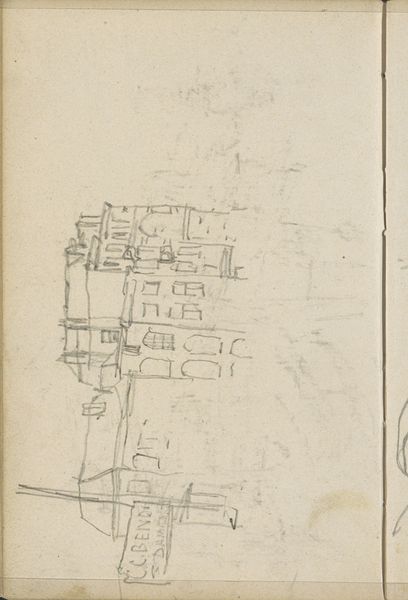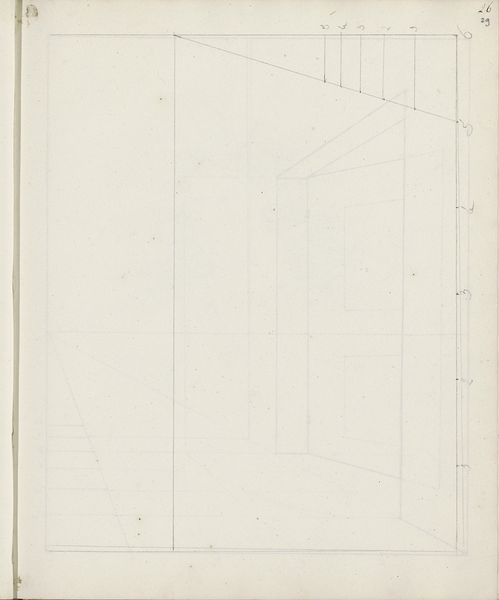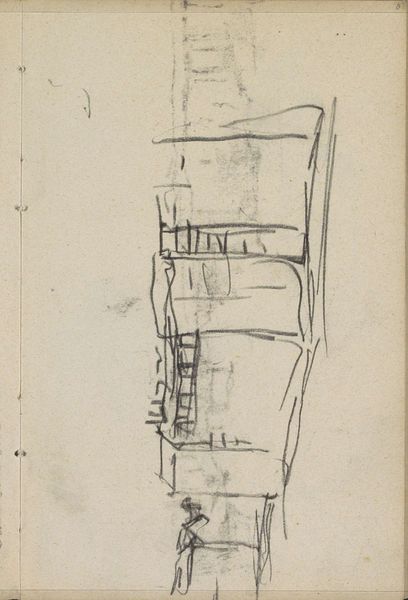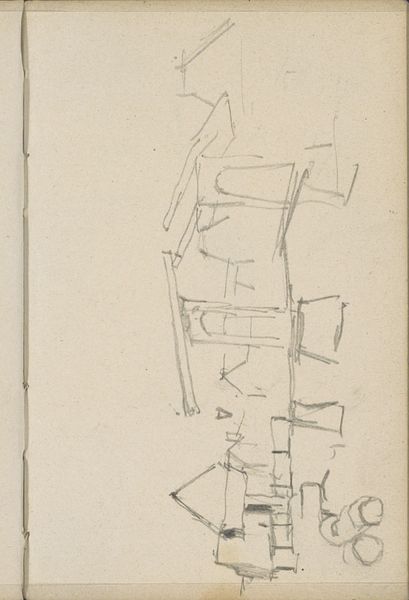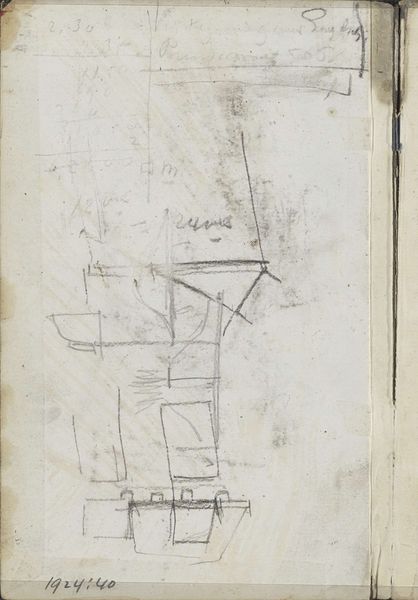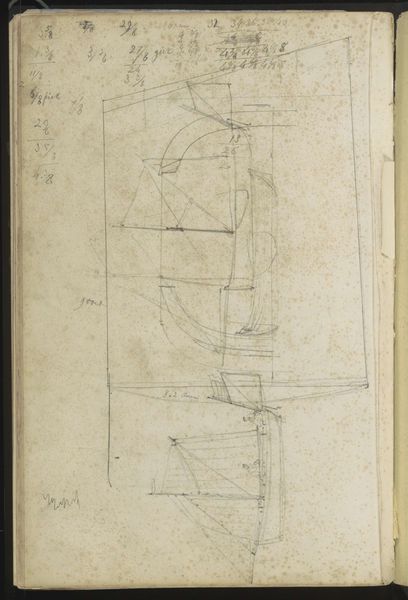
Bemanningsleden en kapitein op een schip met versierde boeg 1797 - 1838
0:00
0:00
drawing, paper, pencil
#
drawing
#
amateur sketch
#
aged paper
#
toned paper
#
incomplete sketchy
#
hand drawn type
#
landscape
#
paper
#
form
#
personal sketchbook
#
romanticism
#
pen-ink sketch
#
pencil
#
line
#
pen work
#
sketchbook drawing
#
sketchbook art
Copyright: Rijks Museum: Open Domain
Curator: This drawing, entitled "Bemanningsleden en kapitein op een schip met versierde boeg," by Johannes Christiaan Schotel, dates from sometime between 1797 and 1838. It’s currently held at the Rijksmuseum. Made with pencil and pen and ink on paper, it depicts the side of a ship. Editor: My first impression is how skeletal it seems, almost like an anatomical drawing of a vessel. The aged paper gives it a very historical, slightly haunting quality, despite the rather loose sketch-like execution. Curator: It's definitely not a polished, formal piece. It seems more like a quick study, possibly from a sketchbook, which is a side of art production we rarely see highlighted. I am most interested in what it tells us about shipbuilding at the time, its prominence and visibility within Dutch society and the place of the vessel within broader power dynamics. Editor: Yes, the sketchiness lends itself to an activist reading. Who are the people aboard? We see crew members and a captain implied in the title, yet are they figures of empowerment or caught in the machinations of the colonial project that propelled so many of these ships? Curator: That's where the dating is so important. Late 18th to early 19th century—right in the midst of major shifts in global trade, colonial expansion and of course abolitionist movements. I find myself wondering how this vessel impacted broader geopolitical tensions. How might Schotel’s drawing operate within, perhaps even critique, those historical frameworks? Editor: Precisely! Looking at it through that lens makes me consider the romanticism associated with maritime paintings versus the brutal reality of life at sea, or the power the ships projected as tools of imperialism. The roughness of the lines seems almost to fight against the picturesque ideal. It’s subtle, but that’s where its strength lies. Curator: Agreed. It serves as a crucial reminder of the importance of contextualizing artworks. Examining its historical position can create discussion. Editor: Ultimately, I think it asks us to consider the stories we tell, and especially, whose stories get told in mainstream historical narratives of maritime power. Curator: Yes, I would have to agree. Its openness is precisely what renders it a great tool for learning and discussion.
Comments
No comments
Be the first to comment and join the conversation on the ultimate creative platform.


